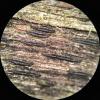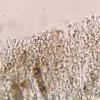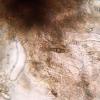
30-12-2025 16:44
Pascal DucosBonjour,Une anamorphe rose stipitée, très nombre

30-12-2025 17:14
 Bernard CLESSE
Bernard CLESSE
Bonjour à toutes et tous,Pourriez-vous aider Albe

29-12-2025 10:15
Hulda Caroline HolteHello, I found and collected this propoloid ascom

30-12-2025 09:04
Hello.A Pyrenomycete sprouting sparsely but very d

29-12-2025 17:44
Isabelle CharissouBonjour,J'aimerais savoir si d'autres personnes au

12-11-2021 00:03
Lepista ZacariasHi everybody,A week ago in my fiels trip I noticed

29-12-2025 17:12
 Bernard CLESSE
Bernard CLESSE
Bonjour à toutes et tous,Pourriez-vous m'aider à
Hysterium hyalinum
Ethan Crenson,
28-09-2017 05:06
Spores are hyaline at first and eventually brown. Mostly 3 septate, constricted at the sepatations. 20-25 x 7.5-9µm.
Asci are 92-110 x 15-17µm.
This seemed to key out to H. hyalinum using Boehm's key and matched fairly well with information from Marion Lohman, "A Cultural and Taxonomic Study of Hysterium hyalinum".
Hans-Otto Baral,
28-09-2017 07:57

Re : Hysterium hyalinum
The name hyalinum could refer to the spores beeing obviously shot when still hyaline, judging from the living, seemingly mature asci on your photos. In your Haematomyxa this is unclear as you did not see living asci, while in my collection the spores were faintly coloured when still inside the living asci.








